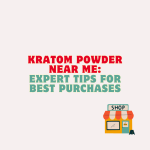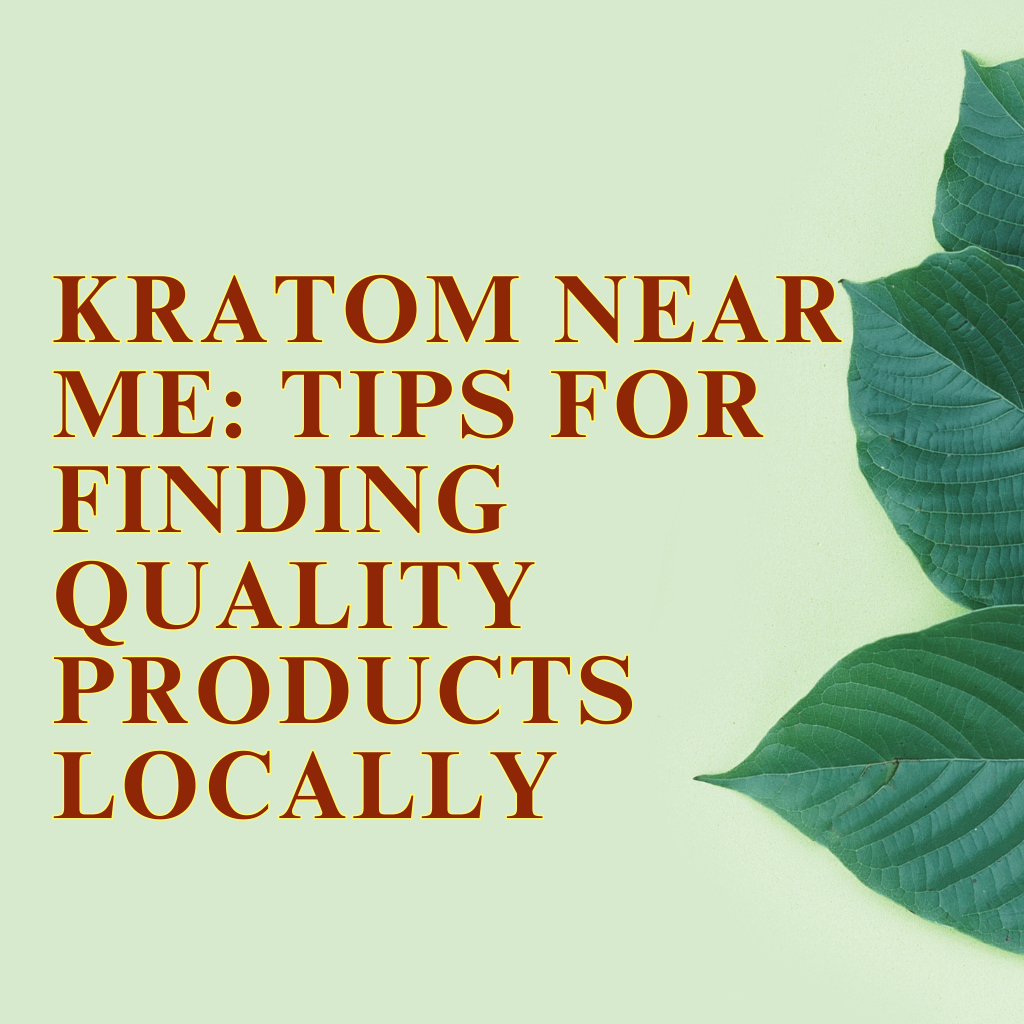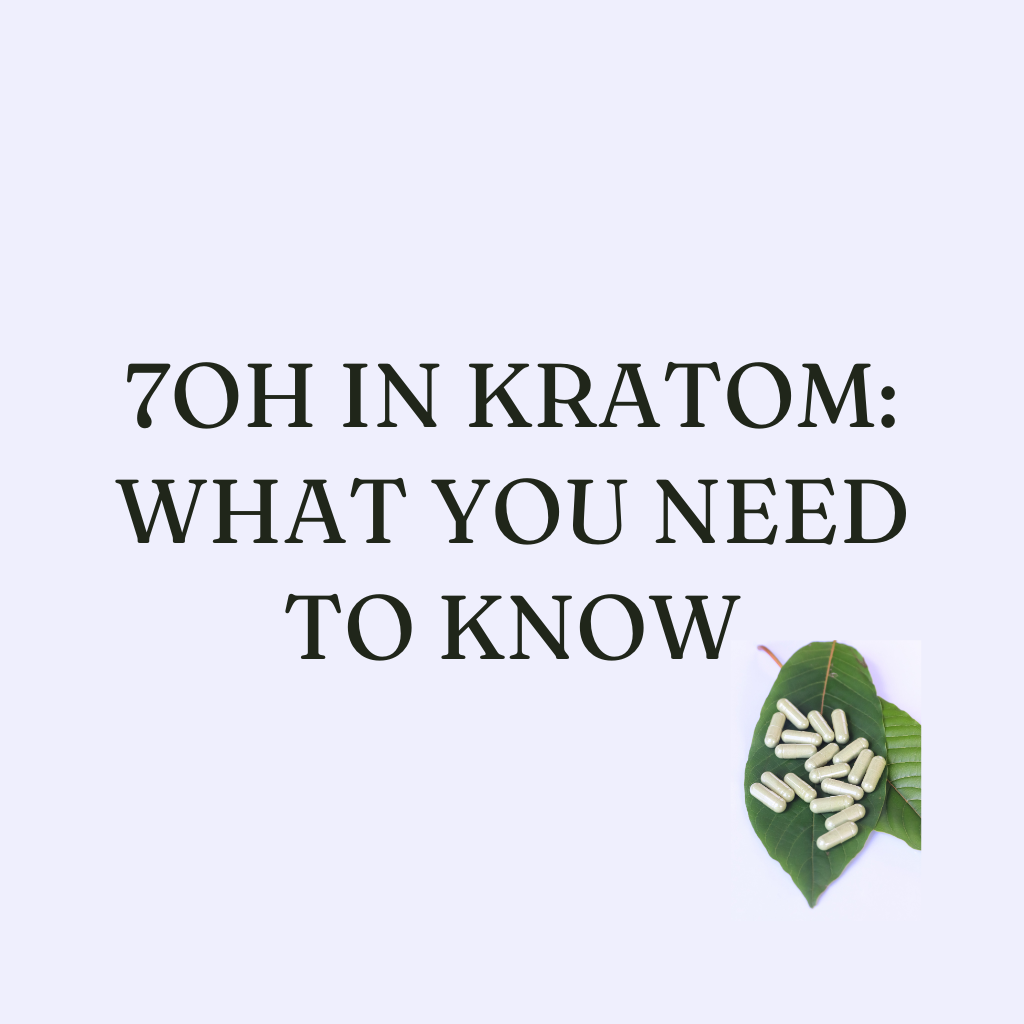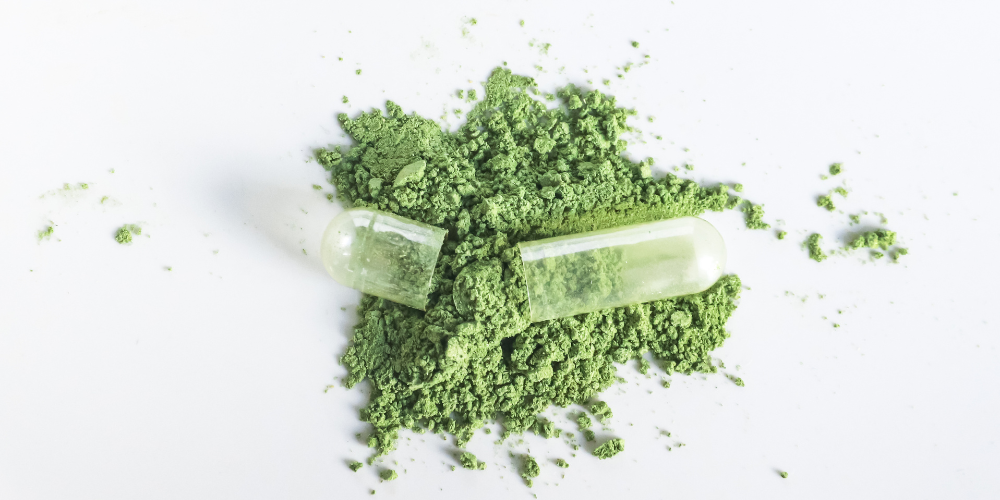
Free Shipping on Orders Over $75!
JOIN OUR EMAIL LIST FOR 20% OFF, weekly coupons up to 30% OFF
How Long Does Kratom Stay Fresh? [and How To Store Them Correctly]
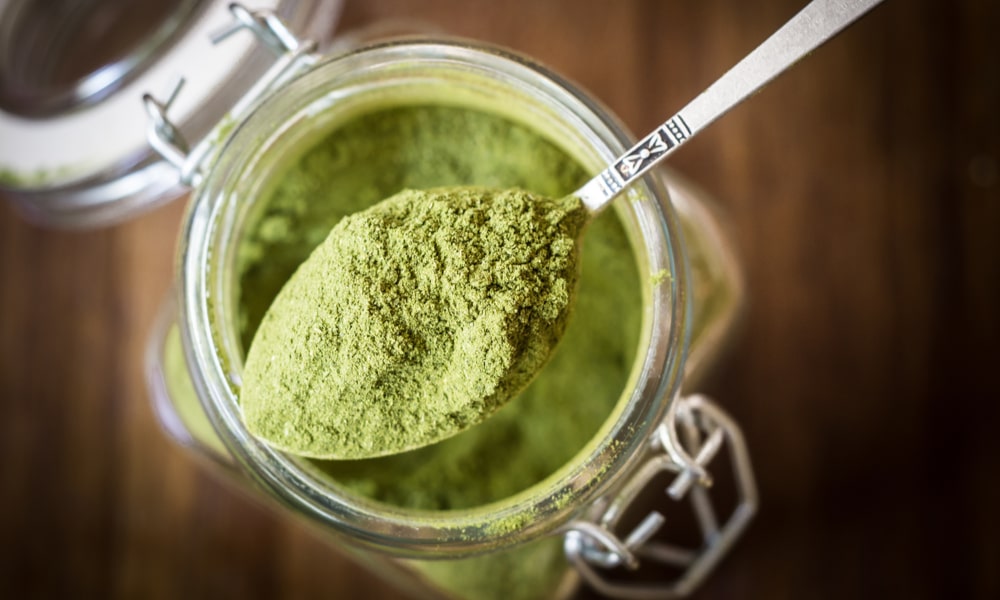
Maybe you’re thinking about buying a large quantity of kratom, or perhaps you’re planning on taking a break. Whatever your circumstances, you might be wondering how long kratom stays fresh.
Kratom stays fresh for roughly 2-3 months. Exposure to oxygen, light, and moisture affects kratom freshness and potency over time. Older kratom is not dangerous, but the effects are weaker. Storing kratom correctly, such as in airtight containers and a cool cabinet, extends the shelf life of the product.
In this post, I’ll explore why kratom declines in effectiveness over time. I’ve also got some handy tips to share so you can keep your kratom fresher for longer!
What is the Shelf Life of Kratom?
Kratom generally has a shelf life of two to three months. But some people have reported keeping their kratom fresh for years by storing it in the right conditions.
Meanwhile, others claim their kratom is past its best within a few weeks. These varying accounts confirm how much of an effect the storage method has on the lifespan of a product.
Kratom is much like any other natural substance, such as green tea and chamomile tea, when it comes to longevity. Ultimately, kratom is a plant material. The law of nature says it will degrade over time.
Regular kratom powder is particularly vulnerable to decline due to being more exposed to the elements. In contrast, at least the kratom powder in capsules is sealed off.
Why is Fresh Kratom Better?
Fresh kratom maintains higher concentrations of alkaloids and therefore is more potent. The alkaloids mitragynine and 7-hydroxymitragynine are responsible for most of kratom’s benefits.
Fresh kratom is bursting with these alkaloids, which bind with receptors in the body to produce therapeutic effects.
But over time, these alkaloids start to decline, making kratom less effective. This decline is only accelerated if you are not storing your kratom properly.
From a cost perspective, fresh kratom at peak potency is preferable. After all, you paid for it at full strength and deserve to enjoy it at full strength!
You pay the price for any drop in potency since you have to take more kratom to make up for it.
Fresh kratom is also better because you know what to expect from your dosage. Seasoned kratomites always know just how much they need and dose accordingly.
But a weaker, older kratom product is less predictable. You’re left in the dark about just how much the potency has declined, and how much more kratom you need to make up for it.
Having to play guessing games with your kratom dosage is never a good situation to be in. You could go too low and have a lackluster experience, or you might overdo it and end up suffering some nasty side effects.
Life is much easier with fresh kratom.
What Factors Affect Kratom Freshness?
Kratom freshness is affected by exposure to oxygen, light, and moisture. Let’s explore in more detail how these factors degrade kratom alkaloids.
Oxygen
Oxygen is the main ingredient in oxidation, and oxidation equals degradation – and not just with kratom! With metals, oxidation leads to rust.
With fatty foods, oxidation makes them go “off”, and with vitamins, oxidation causes them to lose effectiveness.
This is what happens with kratom if you leave a bag of powder open and just lying around on your kitchen table.
Oxidation affects the most important alkaloid in kratom – mitragynine. When oxidation occurs, it turns this therapeutic powerhouse into a shadow of its former self, or to use the technical term, mitragynine pseudoindoxyl.
Don’t worry about the scary name as this form of kratom isn’t dangerous. It’s just much less effective than genuine mitragynine.
Light
Exposure to light is another sure-fire way to ruin a kratom product. Direct sunlight is worse, as this gives the sun’s ultraviolet (UV) rays a free shot at destroying kratom’s alkaloids.
But any form of sunlight will get to your kratom over time. Just like UV rays damage our skin if we stay in the sun for too long without protection, these rays will do the same to your kratom.
Some suggest that kratom can handle a level of exposure to sunlight. Maybe, that’s true, and the harvesting process certainly cannot be completely carried out in the dark. But why take the risk with your kratom?
Moisture
Moisture is another major enemy of kratom. I’m not talking so much about accidentally getting your kratom wet, but exposure to humidity, which depending on where you live, can be a harder problem to avoid.
For example, I live 5 minutes away from the beach, which means the humidity is always at an all time high here.
I need to make sure I store my kratom correctly to avoid the amount of moisture exposure. (More on storing your kratom in the next subheading).
Moist kratom quickly becomes moldy and unsafe to consume.It’s not always easy to tell if your kratom is moist and moldy.
Premium quality kratom can sometimes seem moldy when it isn’t. However, if your kratom powder has a coarseness to it or feels particularly heavy, it’s probably moldy and time to chuck it out.
How to Store Kratom Correctly
Oxygen, light, and moisture are all devastating for kratom. But thankfully, you can protect against these factors with the correct storage methods. Here are my top tips.
Use storage containers
Air-tight storage containers are great at preventing oxidation and mold. Most kratom powder products come in resealable bags – these are okay, but no substitute for a specialized storage container.
Investing in storage containers will be worth it when your kratom is staying fresher for longer.
Storage containers should be absolutely air-tight – I recommend either Tupperware or opaque canning jars. If you’re going to use glass jars that’s okay too, but make sure you store the kratom in a dark place, like a cabinet or pantry.
Vacuum storage bags are also fantastic. Ziploc bags are better than nothing but not always 100% airtight. If you use canning jars, don’t heat the jars like you might when preserving other goods – this will destroy the alkaloids.
You could also buy storage jars that block UV rays. These tend to be more expensive, but the extra protection may be worth it if planning to store kratom for months or even years.
Something to keep in mind when storing kratom is to leave the least amount of empty space as possible in the container. If you have small glass jars, transfer your kratom over to those when your kratom fits in them.
This will minimize the amount of air in the container and consequently, the amount of moisture.
Store in a dark, cool place
Keeping your kratom in a dark, cool place is essential for preventing exposure to light and moisture.
Having a container that protects against moisture may not be enough if your chosen storage place is liable to dampness. Any slight air leakage and moisture will get in and wreak havoc.
I have a simple but special storage place for my kratom products, so I don’t have to disturb them often. I keep them in a cupboard I rarely need to access.
Darkness, check. Dryness, check. Coolness, check. Avoid using your utility room, as any moisture from your washing machine and damp clothes could affect your product.
Whatever you do, don’t store your kratom near a water source. If it gets moldy or completely wet, you won’t be able to salvage it.
Keep your kratom away from windows, air conditioning, and any other well-ventilated areas, too. The changes in temperatures are less than ideal for long-term kratom storage.
If possible, store in bulk
Logically, a storage container filled to the brim with kratom has less room for oxygen than a container with just a few grams. Many kratom users have found storing kratom in bulk a sensible idea for this reason.
I suggest having a large container for each strain and decanting it into smaller containers. Then you don’t have to open up the big one as often.
Keep away from direct heat
Your kitchen is probably not the best place to store kratom, even if it’s in a dark cupboard. The appliances create too much heat, creating a climate that isn’t suitable for kratom storage.
Storing upstairs could also be problematic if you live in a hot area – as we all know, hot air rises! If you live in a toasty climate, the basement is your best bet for storing kratom.
Have a labeling system
If you’re like me, you love kratom and experimenting with lots of different strains. That’s great, but it can be a hassle to organize them since all kratom looks similar.
An efficient labeling system will go a long way to solving your problems. Add a sticky label to your storage container noting the strain, when you purchased it, and when you first removed it from the original packaging.
This reduces the chance that a forgotten kratom strain will end up lying around at the back of your cupboard for months.
Avoid using other storage equipment
A cigar humidor sounds like the perfect place to store kratom, right? It’s great for keeping tobacco fresh, so it should serve kratom just as well, you might think.
Unfortunately not. Even though kratom and tobacco are both plant-based, they have different storage requirements.
Kratom needs to be kept fresh. Tobacco needs to be kept moist.
You don’t need to overthink kratom storage and purchase any fancy equipment. A humble, opaque, airtight storage container will work perfectly.
Keep product sealed until use
The packaging your kratom comes in should be properly sealed and airtight, providing you’ve purchased from a reputable brand!
There’s no need to open it up and check things out before you’re ready to use it. Just store it along with the rest of your kratom in a dark, cool space.
You won’t learn a lot by breaking the seal and investigating your product. But you will expose the kratom to oxygen, light, and moisture. Resist your temptation and curiosity and leave the packet be. Trust me. It will be fine!
How Can I Tell if My Kratom Is Still Fresh?
Over time, kratom loses its scent and color. Fresh kratom has a rich, natural smell, with all the pungent aromas you would expect to get a whiff of in the rainforest.
Powder from a good batch will also have strong coloring. You can usually tell by instinct whether kratom is past its best.
Kratom exposed to moisture will have visible mold spores on it. Never take kratom with mold on it, you could get seriously ill, and moldy kratom would have lost its effects anyway.
Moist kratom is heavier than fresh, dry kratom and may start clumping together when you handle it. But be careful. High-quality kratom may feel moist to touch, but that doesn’t mean it is.
Judge the freshness of a product by its coarseness and denseness. If it isn’t overly heavy and has kept its finely-ground characteristics, it’s probably fine.
Since stale kratom isn’t dangerous, as long as it doesn’t smell funky, just give it a try.
Go with your regular dose, and if you aren’t getting the usual effects within a couple of hours, it’s probably time to toss it. Stale kratom may also lose some of its bitter taste.Now that you know how to keep your kratom fresh, feel free to check out our products. We offer 3rd party lab results, and kratom in various forms. Click the link here to be redirected to the shop page.
Did like a post? Share it with:
nimesh
Search
Table of Index
Post Categories
Related Posts
Where to buy kratom near me is a question that many users find themselves asking when looking for quality products
Finding the best Kratom Powder near me can feel difficult with so many options available locally. But steering through stores
Are you one of those scrolling on the internet for ‘7ALKS near me’? Are you looking for 7ALKS, 7-Hydroxy 15mg
7OH, or 7 hydroxymitragynine, is a significant alkaloid found in kratom that plays a crucial role in its effects. This
Curious about 7OH kratom? You’re not alone. As more people explore different botanical products, 7 hydroxymitragynine (7OH) has emerged as
Have you ever accidentally over-consumed kratom and experienced a hangover? Well, the good news is they’re easily avoidable. A kratom
Disclaimer
Must be 21 years or older to purchase kratom. Products are not for internal use. The US FDA Has Not Approved Kratom as a Dietary Supplement. We do not ship to the following states, cities and counties in the US where Kratom is banned Alabama, Arkansas, Indiana, Rhode Island, Tennessee, Vermont, Wisconsin. Sarasota County, Union County, Denver, San Diego, Louisiana. All sales should be 100% U.S. sales only.
Consult with a medical professional before use if taking prescription medication or affected by a serious medical condition. Always seek medical advice before using this or any other supplemental dietary product. These statements have not been evaluated by the Food and Drug Administration (FDA).
© 2025 Kratom Krush. All Rights Reserved. Operated by XXIV LLC Privacy PolicyTerms & Conditions


